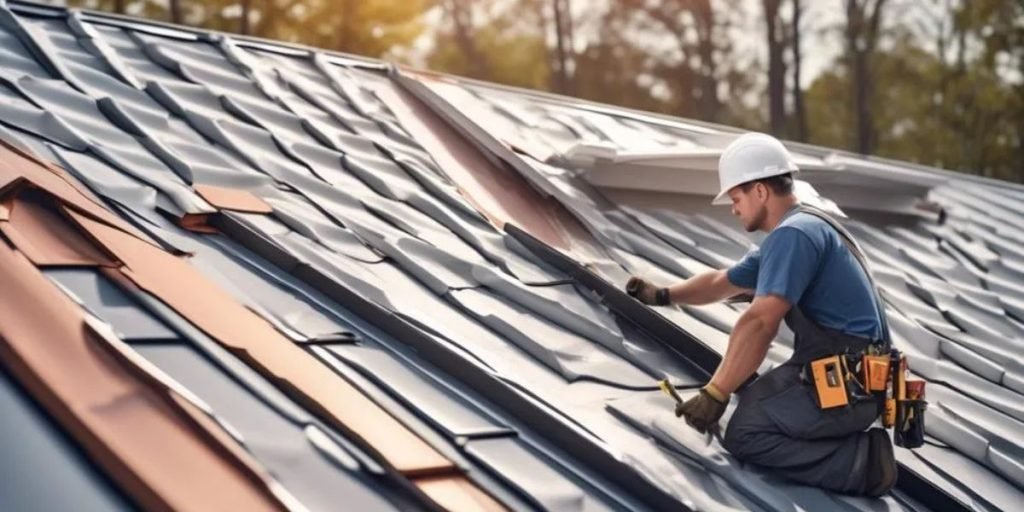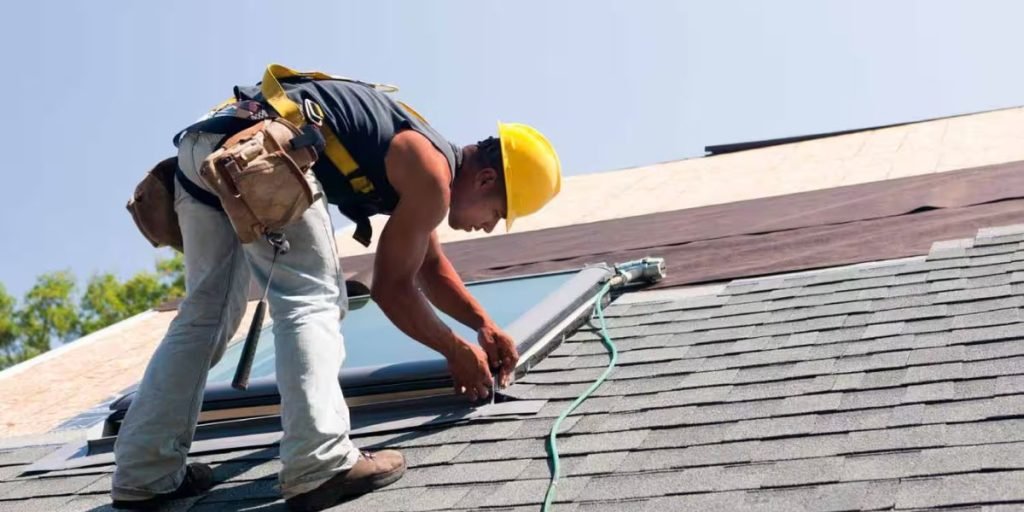
Weather plays a pivotal role in the performance and longevity of roofing systems and skylight installations. It affects every stage of the process, from planning and installation to maintenance and repair. Homeowners and roofing professionals must carefully consider weather conditions to ensure the durability and safety of roofing structures and skylights. This article explores how various weather elements—rain, wind, snow, heat, and humidity—impact roofing services and skylight installations.
The Influence of Weather on Skylight Installation

1. Rain and Moisture During Installation
Rainfall is one of the most challenging weather conditions during skylight installation. Installing a skylight during or immediately after a rainstorm can lead to several complications:
- Water Intrusion: Moisture can seep into the roofing layers, compromising the structure’s integrity and increasing the risk of leaks.
- Sealant Issues: Many adhesives and sealants require dry conditions to adhere properly. Rain can wash away uncured sealants, leading to improper sealing around the skylight.
- Workplace Hazards: Wet surfaces on roofs increase the risk of accidents for installers, making the job unsafe.
To prevent these issues, roofing professionals often postpone skylight installation during rainy periods or use protective coverings to shield the work area.
2. Impact of Wind
High winds can disrupt the precision required during skylight installation. Windy conditions may:
- Shift roofing materials or skylight components before they are secured.
- Create hazardous conditions for installers working at heights.
- Damage temporary barriers or coverings, exposing the roof to further damage.
Professionals recommend avoiding skylight installations during days with strong winds to maintain the quality and safety of the work.
3. Cold Weather Challenges
Freezing temperatures and snow present unique obstacles for skylight installation:
- Material Brittleness: Roofing materials, including glass and sealants, can become brittle in cold conditions, increasing the likelihood of cracking during installation.
- Condensation Issues: Sudden temperature fluctuations can lead to condensation between the skylight layers, potentially causing mold and mildew growth.
- Snow and Ice Risks: Snow and ice accumulation can hinder access to the installation site and make roofs slippery, endangering workers.
Cold-weather installations often require specialized materials and techniques, such as using sealants designed to cure in low temperatures.
4. Heat and UV Exposure
Excessive heat and prolonged sun exposure during skylight installation can cause:
- Expansion and Contraction: Materials may expand in extreme heat, affecting alignment and proper sealing.
- Sealant Deterioration: Some adhesives and sealants may cure too quickly or lose effectiveness under intense sunlight.
- Worker Fatigue: High temperatures can lead to worker exhaustion, potentially compromising the quality of the installation.
To address these challenges, installations are often scheduled during cooler parts of the day, and heat-resistant materials are used.
How Weather Affects Roofing Services
1. Rain and Roofing Services
Rain is a significant factor influencing various roofing services, including repairs, maintenance, and replacement:
- Leak Identification: While rain can expose leaks, it complicates the repair process. Wet conditions make it harder to apply materials and sealants effectively.
- Roof Damage: Prolonged exposure to heavy rainfall can weaken shingles, tiles, and underlayment, leading to water infiltration and structural damage.
- Maintenance Delays: Regular maintenance, such as gutter cleaning, is often postponed during rainy weather to avoid potential accidents.
Roofing experts recommend scheduling maintenance and repairs during dry weather to ensure durability and efficiency.
2. Wind and Storm Damage
Strong winds pose a significant threat to roofs, particularly during storms or hurricanes:
- Shingle Displacement: High winds can lift and displace shingles, exposing the underlayment to water damage.
- Structural Damage: Severe storms can cause branches or debris to fall on roofs, resulting in punctures or even collapse.
- Long-Term Wear: Continuous exposure to high winds can loosen fasteners, reducing the roof’s resistance over time.
For areas prone to strong winds, roofing systems designed for high wind resistance are essential. Regular inspections after windstorms are also critical to identify hidden damages.
3. Snow, Ice, and Cold Temperatures
Winter weather conditions, including snow and ice, have a profound impact on roofing services:
- Ice Dams: Melting snow can refreeze at the roof’s edge, creating ice dams that block proper drainage and lead to water pooling.
- Weight of Snow: Excessive snow accumulation can strain the roof structure, potentially causing it to sag or collapse.
- Freeze-Thaw Cycles: Repeated freezing and thawing of water trapped in cracks can exacerbate damage and lead to leaks.
Winter roofing services often focus on snow removal, ice dam prevention, and emergency repairs to address immediate threats.
4. Heat and UV Radiation
Roofs exposed to prolonged heat and ultraviolet (UV) radiation face unique challenges:
- Material Degradation: UV rays can break down asphalt shingles, causing them to crack and lose their protective granules.
- Energy Efficiency: High temperatures can increase indoor cooling demands if the roof lacks proper insulation or reflective coatings.
- Expansion and Contraction: Heat causes roofing materials to expand, which may lead to warping or loosening over time.
Roofing professionals address these issues by using reflective materials, energy-efficient coatings, and heat-resistant shingles in hot climates.
5. Humidity and Mold Growth
High humidity levels can have long-lasting effects on roofs:
- Moisture Retention: Humidity can cause wooden components to rot and metallic parts to corrode.
- Mold and Mildew: Persistent moisture fosters the growth of mold and mildew, which can compromise air quality and lead to health concerns.
- Insulation Problems: Moisture penetration into the roof can damage insulation, reducing its effectiveness.
Routine inspections and maintenance are essential in humid regions to prevent moisture-related problems.
Seasonal Considerations for Skylight Installation and Roofing

Each season presents unique challenges and opportunities for roofing and skylight services:
- Spring: Ideal for inspections and maintenance as weather conditions are milder, but spring storms may cause delays.
- Summer: Warm and dry weather facilitates efficient work, though extreme heat requires scheduling adjustments.
- Autumn: Cooler temperatures and less rainfall make it an excellent time for both roofing and skylight installations.
- Winter: Limited roofing activities due to snow and ice, with a focus on emergency repairs and preventive measures.
Preparing for Weather-Related Challenges
To mitigate the impact of weather on skylight installation and roofing services, consider the following strategies:
- Weather Monitoring: Stay updated on local forecasts to schedule work during optimal conditions.
- Material Selection: Use weather-resistant materials designed to withstand specific environmental conditions.
- Professional Expertise: Rely on experienced professionals who understand the nuances of working in various weather conditions.
- Preventive Maintenance: Regular inspections and timely repairs help identify potential weather-related issues before they escalate.
Conclusion
Weather is a critical factor influencing skylight installation and roofing services. From rain and wind to heat and snow, each element presents unique challenges that require careful planning, specialized materials, and expert knowledge. By understanding and addressing the impact of weather, homeowners and professionals can ensure that roofing systems and skylights remain durable, efficient, and safe for years to come.
Your questions deserve answers! Call 771 2026056 and let us help you find clarity and resolve your challenges today. Don’t wait—reach out!
